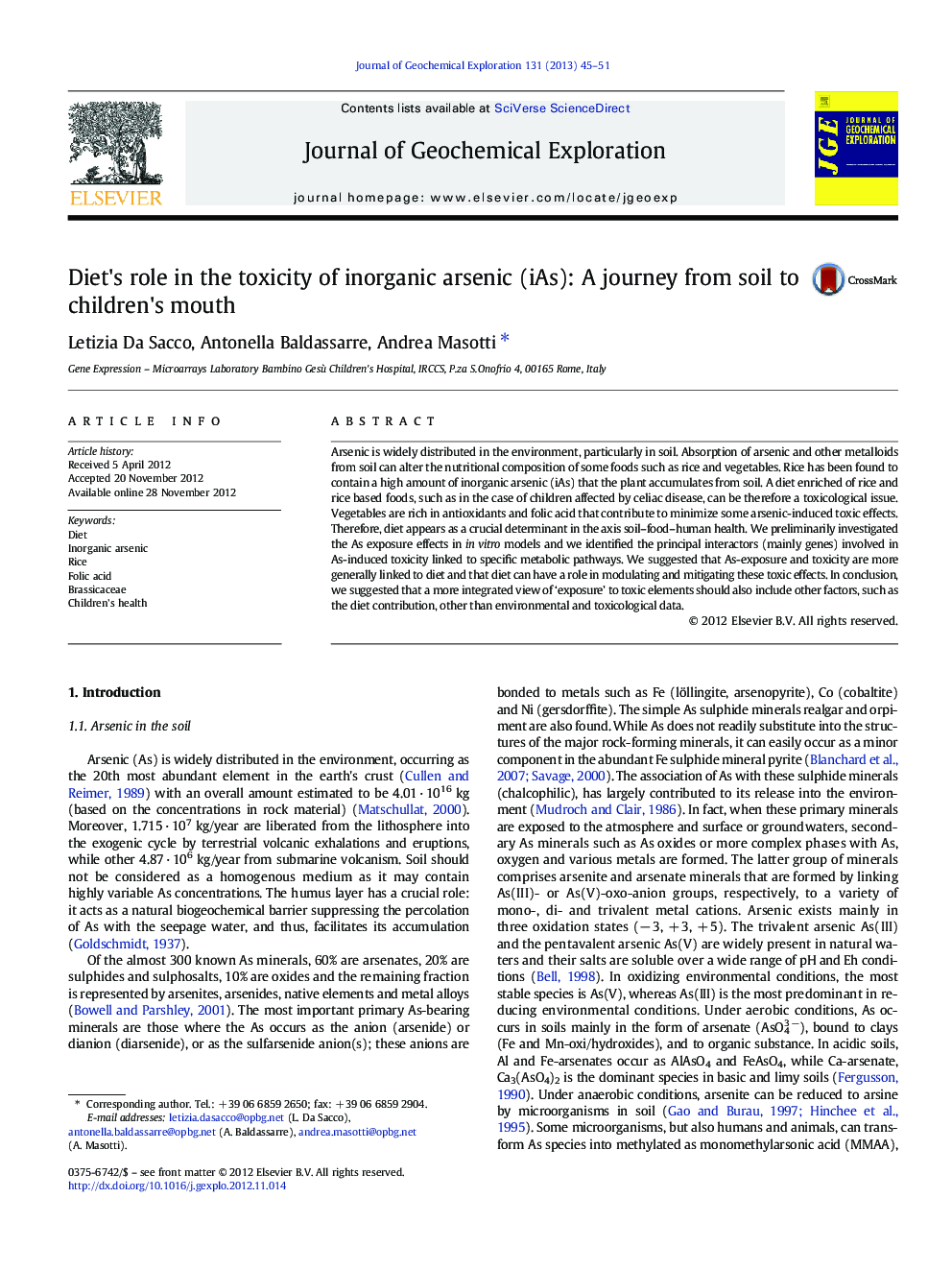| Article ID | Journal | Published Year | Pages | File Type |
|---|---|---|---|---|
| 4457462 | Journal of Geochemical Exploration | 2013 | 7 Pages |
Arsenic is widely distributed in the environment, particularly in soil. Absorption of arsenic and other metalloids from soil can alter the nutritional composition of some foods such as rice and vegetables. Rice has been found to contain a high amount of inorganic arsenic (iAs) that the plant accumulates from soil. A diet enriched of rice and rice based foods, such as in the case of children affected by celiac disease, can be therefore a toxicological issue. Vegetables are rich in antioxidants and folic acid that contribute to minimize some arsenic-induced toxic effects. Therefore, diet appears as a crucial determinant in the axis soil–food–human health. We preliminarily investigated the As exposure effects in in vitro models and we identified the principal interactors (mainly genes) involved in As-induced toxicity linked to specific metabolic pathways. We suggested that As-exposure and toxicity are more generally linked to diet and that diet can have a role in modulating and mitigating these toxic effects. In conclusion, we suggested that a more integrated view of ‘exposure’ to toxic elements should also include other factors, such as the diet contribution, other than environmental and toxicological data.
Graphical abstractFigure optionsDownload full-size imageDownload as PowerPoint slideHighlights► Inorganic arsenic is absorbed by rice and vegetables from soil. ► Rice and rice based foods contain high levels of inorganic arsenic. ► Inorganic arsenic is toxic and produces reactive oxygen species in human cells. ► Eating vegetables may contribute to reduce oxidative stress and arsenic toxicity. ► Diet can positively influence the healthy status of infants, children and adults.
